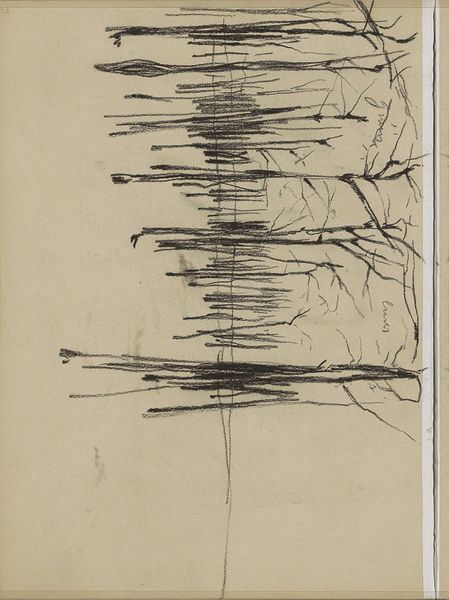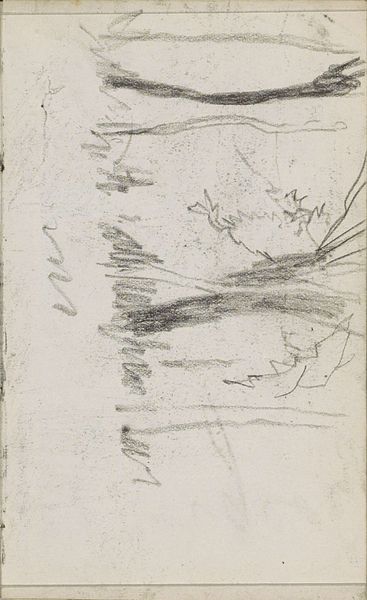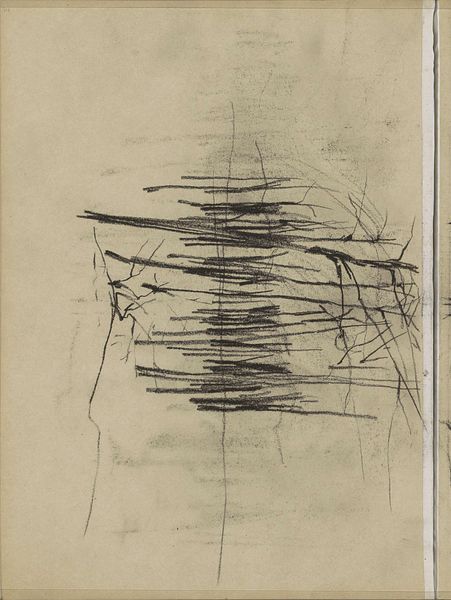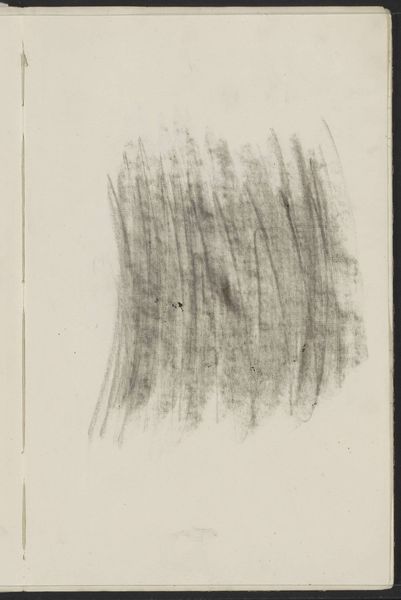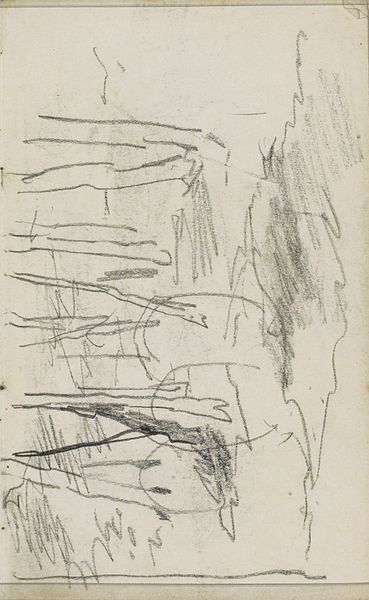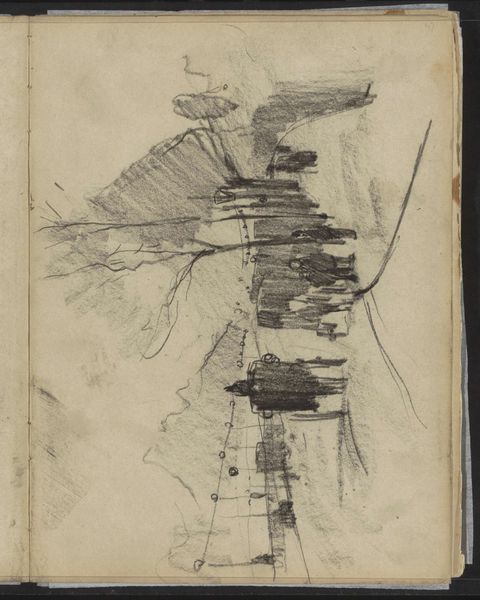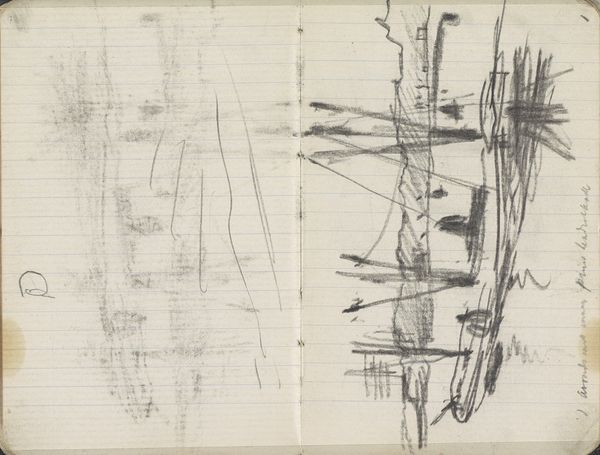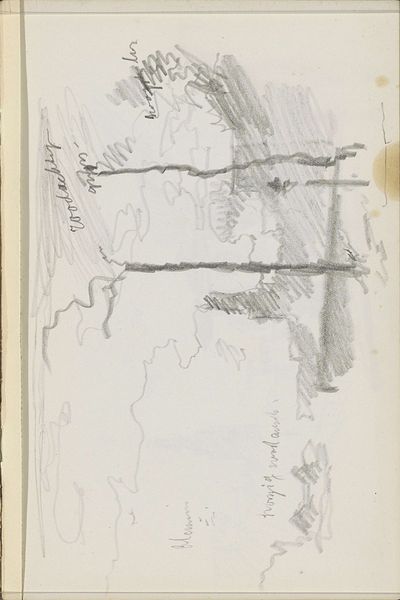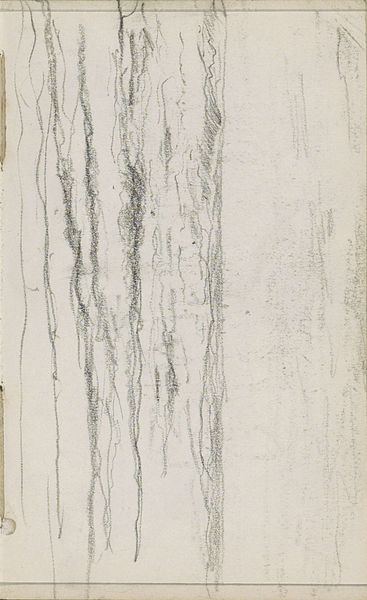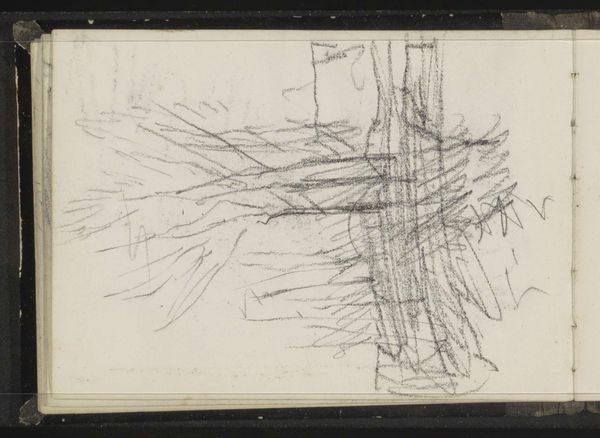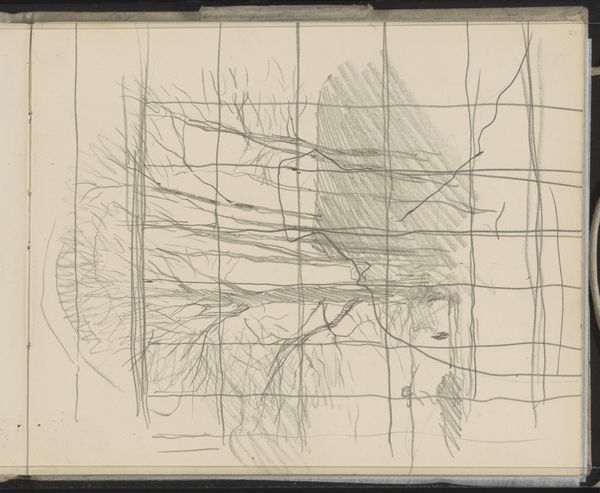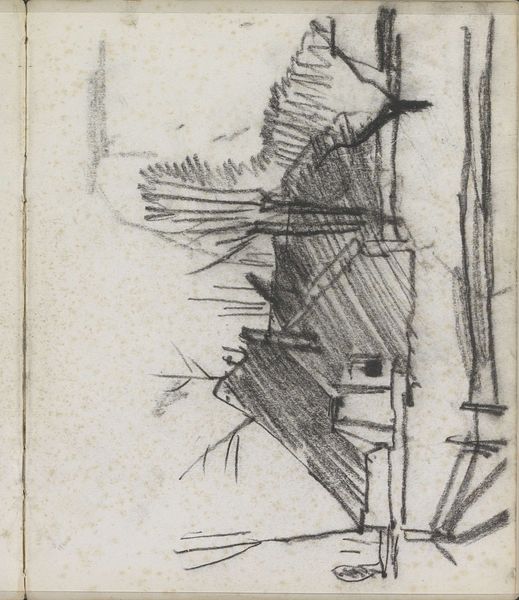
Copyright: Rijks Museum: Open Domain
Curator: Before us, we have "Bosgezicht" – a graphite drawing, likely created sometime between 1874 and 1923, by Willem Witsen. It's currently held in the collection of the Rijksmuseum. Editor: It has this restless quality; the lines are very quick, almost frenetic, as if the artist were trying to capture a fleeting moment, a particular mood within the landscape, a dense dark space where vertical lines meet in the distance with very little empty space. Curator: Witsen, known for his associations with the Amsterdam Impressionists, seems to be grappling here with realism. The artistic milieu of his time demanded it, of course, but I wonder about his personal engagement with the subject of the forest. What did it symbolize for him in the broader context of societal shifts? Was it a place of refuge or confrontation? Editor: I find myself pondering the materiality of this drawing. The paper stock has clearly aged, adding texture, a history of mark-making that's both additive and subtractive. And those bold marks created by the graphite – did he consider their source, their fabrication? Graphite comes from the earth; here, it helps him represent his vision. The act of creation is tied to resource extraction and production. Curator: Certainly. The romantic allure of nature is inseparable from the industrial context that was steadily encroaching upon it. Did the increasing exploitation of the natural world intensify the desire to preserve it artistically? And how did the artist’s privileged position factor into his portrayal of landscapes so closely tied to rural labor and resource extraction? Editor: Those are critical questions to explore. Viewing the work, the methodic build-up of graphite seems very repetitive, almost a factory type labor. I wonder about the class politics inherent to landscape art like this; for the vast majority, engagement with the environment wasn’t an aesthetic luxury, it was essential labor for survival and that creates space for critique. Curator: Examining such artworks, one appreciates not only the skill of the artist but the complex interplay of power, labor, and the human connection with the natural world reflected, and perhaps even obfuscated, by their representation. Editor: Indeed. Looking through the lens of the materiality opens up ways of looking at and questioning representation.
Comments
No comments
Be the first to comment and join the conversation on the ultimate creative platform.
